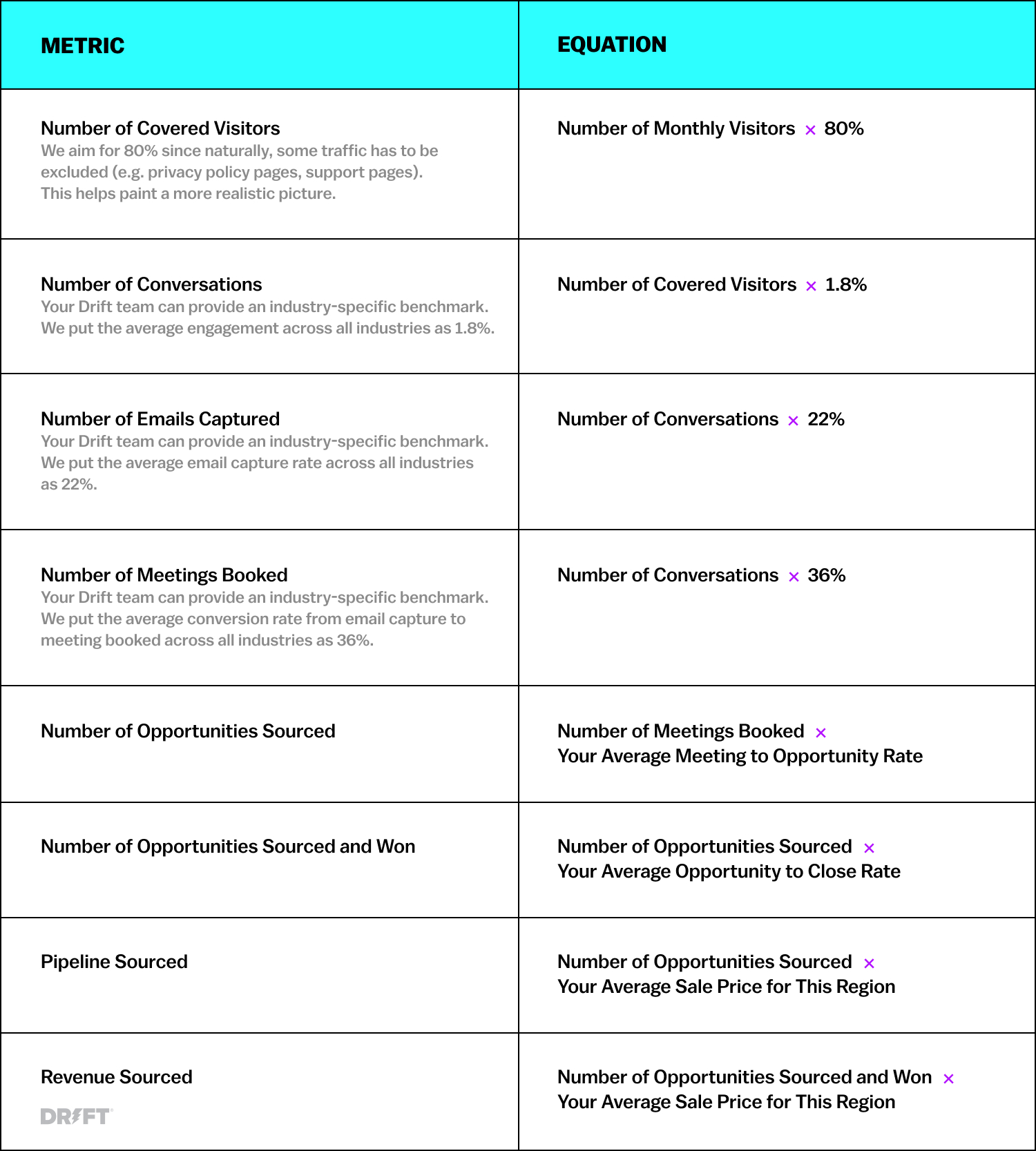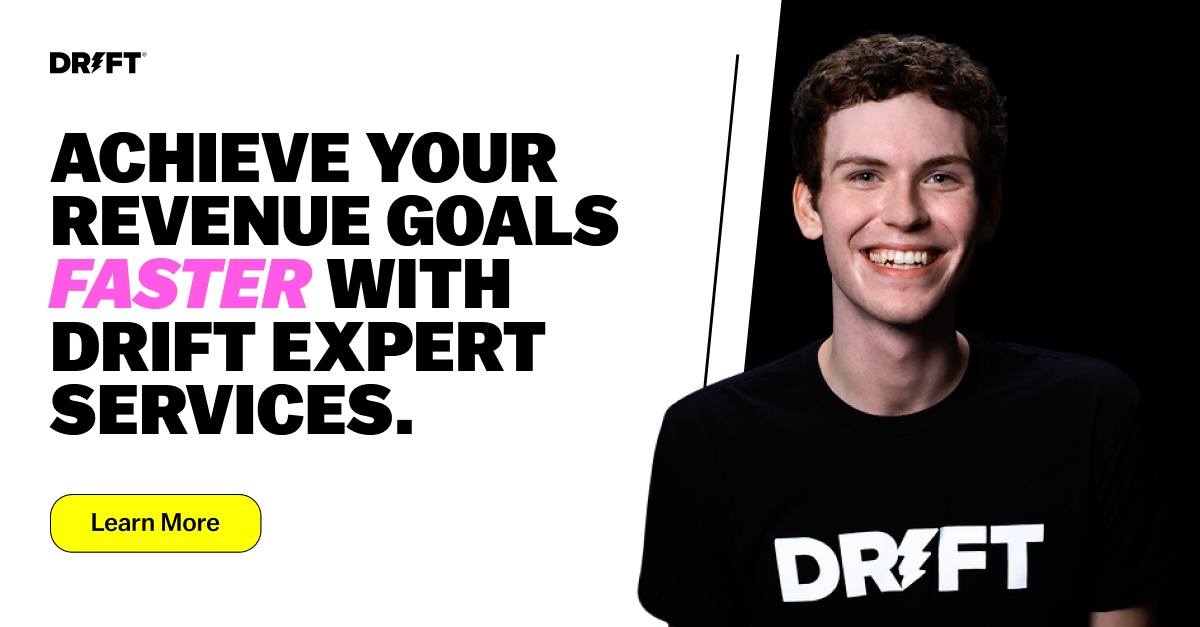Your buyers speak more languages than one. But that begs the question: Why doesn’t your website do the same?
In today’s digital world, our websites act as our home base. It’s the first place that people visit to figure out what your business does and what value you can create for them. Simply put, it starts the conversation — which is what our conversational solutions are all about.
But having a monolingual experience means you’re not connecting with site visitors as much as you could be.
Above all, buyers prize personalization. In 2022, McKinsey found that 75% of companies that invested in one-to-one experiences grew their market share. In addition, 80% of consumers say they’re more likely to purchase from a brand that serves up a personalized experience.
Not to mention that creating a multilingual conversational experience easily drives results. Once you’ve set up conversational solutions in the first region, the cost of expanding to a new one is incremental. That means a massive return on investment (ROI), especially considering Drift’s 670% ROI.
All this means it’s high time you delivered a multilingual conversational experience that engages visitors worldwide, drives revenue, and accelerates deal cycles. Here’s how you can do exactly that.
1. Evaluate Your Next Region for Localization
The first step is to figure out where you’ll be launching your next localization project.
When you’re evaluating regions, prioritize on the basis of performance. Keep in mind that it takes two to have a conversation, so there needs to be enough web traffic to justify investing in that region. Additionally, you’ll need to have a sales team who can engage with those visitors in their own language.
Here are a few factors to consider when evaluating if it’s worth localizing your conversations for a specific region:
- Is there a sufficient amount of web traffic from this region? Or has this region been defined as a growth area by your organization?
- Do you have a sales team that can support this region in its local language?
- Does this region have its own localized marketing campaigns?
- Does your company have an interest in continuing its investment in this region?
If you answered “yes” to a majority of these questions, localizing is a good move.
Once you’ve decided on a region, you’ll need to get buy-in from regional stakeholders. This is a good time to leverage the data you used to answer those questions from before. Below is a simple formula you can use to estimate the outcome of your localization project 👇

Remember, you’re not in this alone: Lean on your Drift team for industry-specific benchmarks so you can better estimate your outcomes. With these estimates in your back pocket, you can drive a solid business case for localizing in your new region.
Pro Tip ⚡ Skip the Excel spreadsheet and use our interactive ROI calculator. All you have to do is plug in your region’s numbers to unlock the estimated impact of your localization project.
2. Identify Your Regional Team Members
If you’re looking to grow your conversational solutions in a new region, you can’t just set it and forget it. Instead, you’ll need to have a team that is going to own the launch and optimization process.
Here, you’ll want to partner with four key roles.
- Marketing Leader: This person will own the launch and iteration of your localization efforts. They will also craft experiences that are aligned with the region’s new and upcoming marketing campaigns. This person is usually already involved with Drift to some degree.
- Sales Leader: This person will help enable the region’s sales team, provide feedback to the team, and monitor performance to ensure the sales team is successfully adopting the Conversational Sales platform.
- Translator: This person or agency will help you translate your core experiences into the regional language, while also optimizing existing experiences in partnership with the region’s marketing leader. You don’t always need a dedicated person for this; instead, you can lean on a regional team member to lend a hand in the translation process.
- Executive Sponsor: This person will help unblock any challenges during the expansion process. They will also own the vision for this region’s conversational efforts which will allow the team to optimize their strategies and drive strong outcomes.
Pro Tip ⚡ Have the sales reps ready but not ready to build localized experiences? You can also set your playbook targeting to route conversations from that region to the local team. Consider this a version 0.5 as you more formally localize your experiences.
3. Plan Your Version 1.0 Launch
Now that you have your team in place, you’re ready to start planning.
At the start, you’ll want to launch with at least 2-3 localized experiences. You’ll also need to configure your widget for that language, set up routing for that region, and train your sales team on your conversational platform.
Let’s break this down in more detail 👇
Prepare Your 2-3 Localized Experiences
A quick way to create localized experiences is to clone your Engage All playbook and 1-2 other well-performing playbooks, then get them translated. Alternatively, you can explore our Stage 1 Revenue Acceleration Guide to see if there are any other playbooks that would help engage site visitors from your region.
During translation, remember to translate for both language and culture. Word-for-word translations rarely yield good experiences, so make sure your translator focuses on the intent behind your messaging to ensure the conversation flows smoothly.
Pro Tip ⚡ Download your playbook’s copy to share it with your translator. And don’t forget to share the test link for the translated playbook so you can get more feedback from native speakers and ensure the conversation flows nicely.
Configure Your Widget’s Language
Localization isn’t just limited to your playbooks though — in fact, every part of your experience should be localized. Configuring your widget’s language will ensure that site visitors get the full experience in their region’s language.
You can do this by following our multi-language rollout process and setting up your targeting so that the right widget shows up on web pages and properties where you use this language.
Set Up Regional Routing
Having the proper routing rules in place is crucial to making sure your conversations go to the right people. After all, the last thing you want is for your sales reps to have to pull up Google Translate in a panic.
You can set up routing by adding the regional sales team to your routing rules. Then, put in the same targeting conditions you used for your localized playbooks and widgets. This will direct the site visitor to the team that speaks their respective language.
Don’t forget to also localize your fallback messages so your site visitors know when your team is away.
Train Your Sales Team
Both the manager overseeing your regional sales team and the sales representatives who will actually be doing the chatting should be trained in Conversational Sales best practices.
We recommend you train your representatives 12-72 hours before launch so they can put their learnings into practice almost instantly. Sales managers should be trained 1-2 weeks before the sales rep training.
Pro Tip ⚡️ Partner with Drift to set up a training or attend one of our live training webinars to make the process easier! Alternatively, you can access our on-demand training directly from Drift Insider, including our Conversational Sales Certification and Conversational Sales Training.
4. Launch and Optimize
You’ve successfully expanded your conversational experience — give yourself a pat on the back! But the work isn’t done yet.
After launch comes optimization. We suggest waiting two weeks to gather data from your conversations. Once you’ve gained insight into what your site visitors are and aren’t engaging with, you can optimize the playbooks you initially launched.
In the meantime, brainstorm your next round of launches by sourcing feedback from your sales team and looking at your region’s marketing investments. This way, you can ensure you’re integrating your conversational experiences in the most effective way possible — whether that’s crafting visitor retargeting playbooks or dialing up your account-based marketing.
Pro Tip ⚡️ Once you have the data back from your initial launch, review our course on optimizing your playbooks so you can make the most of your results.
Final Thought
Regardless of what language you or your buyers speak, everything starts with a conversation. And that’s why it’s worth investing in localization — so that all your conversations flow even faster.
We at Drift are here to support you in having conversations in every language. So, don’t forget to partner with our Drift team of experts in your language expansion effort. We’re happy to guide you through the process and equip you with everything you need to create a multilingual experience that will spark conversations with your buyers, globally.









